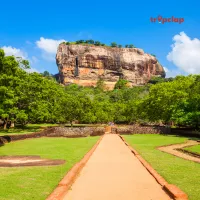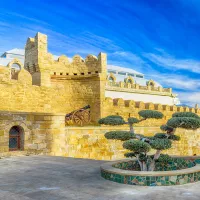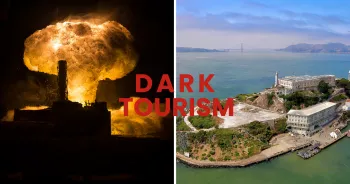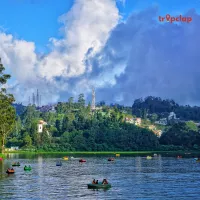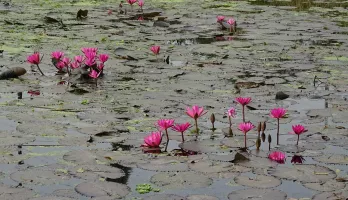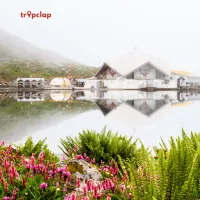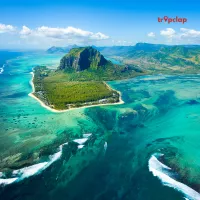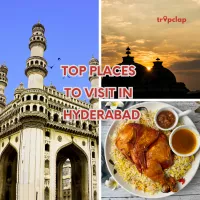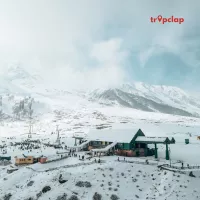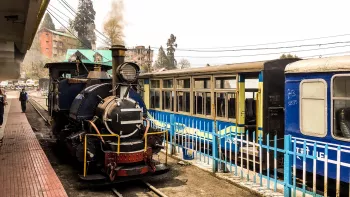Top 10 Things to do in Bhavnagar
Explore the top 10 things to do, from cultural wonders to recreational gems, for a memorable experience in Bhavnagar Gujarat
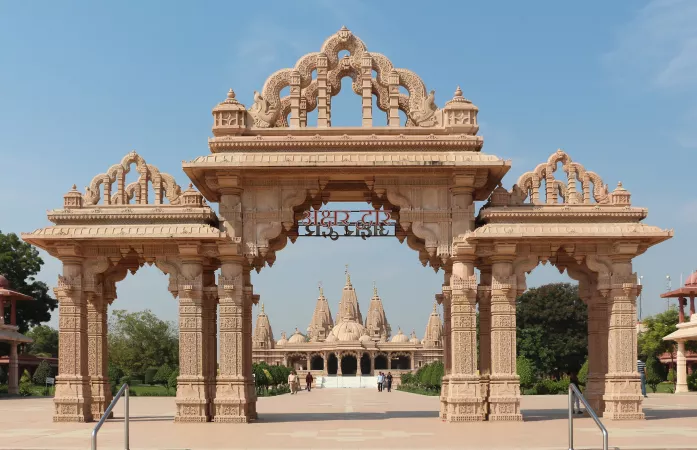
Bhavnagar is a city in the Bhavnagar district of the Saurashtra region of Gujarat, located on the Gulf of Khambhat. The city is located at a distance of 228 km from Ahmedabad, the capital of Gujarat. The city is a major industrial centre and is known for its textile mills, chemical plants, and oil refineries. The city is also known for its exports of salt and its traditional handicrafts such as silver jewellery, carpets, and block printing. It is also the home of the renowned Bhavnagar University, which is one of the top universities in Gujarat. The city also has a number of other educational institutions.
The state was founded on the ruins of the ancient city of Vallabhipur, which was destroyed by marauding armies in the 14th century.
Bhavnagar was built as a fortified city with seven gates and seven forts. The city was home to a large Hindu population, as well as a significant number of Parsis, who had fled persecution in Iran. The city's first ruler, Bhavsinhji Gohil, was a patron of the arts, and the city soon became known for its fine crafts and textiles. Later, Bhavnagar was annexed by the British East India Company in 1819, and the city's ruler, Maharaja Bhavsinhji, was granted a British title. The city's economy prospered under British rule, and the city's population grew to over 100,000. It was also an important battle site during the Indian Rebellion of 1857. The city's garrison, which was composed of Indian soldiers and policemen, successfully defended the city against a large force of rebel soldiers.
Bhavnagar became a princely state of India after independence in 1947, and the city's ruler, Maharaja Krishnakumar Sinhji, was granted a royal title. Bhavnagar is now a major industrial center, with a large port and a thriving economy. However, the place also has numerous locations that are a must-visit.
Table of Content
- Learn about the Nilambagh Palace
- Spent time at the Barton Library and Museum
- Wander around the Gandhi Smriti
- Stroll at the Victoria Nature Park
- Spend a quiet evening at Gaurishankar Lake
- Pay your homage at the Takteshwar Temple
- Devote yourself at the Shri Swaminarayan Mandir
- Feel the serenity at Gopnath Beach
- Visit the wildlife at the Bhavnagar Blackbuck National Park
- Shopping and eating in Bhavnagar
Per Person
28,999
*EXCLUDING APPLICABLE TAXES 4.1 Ratings
( 56 Reviews )
( 56 Reviews )
Per Person
27,999
*EXCLUDING APPLICABLE TAXES 4.1 Ratings
( 56 Reviews )
( 56 Reviews )
Total
67,000
*EXCLUDING APPLICABLE TAXES 4.1 Ratings
( 56 Reviews )
( 56 Reviews )
Total
42,500
*EXCLUDING APPLICABLE TAXES 4.1 Ratings
( 56 Reviews )
( 56 Reviews )
Total
67,000
*EXCLUDING APPLICABLE TAXES 4.1 Ratings
( 56 Reviews )
( 56 Reviews )
Total
68,000
*EXCLUDING APPLICABLE TAXES 4.1 Ratings
( 56 Reviews )
( 56 Reviews )
Per Person
15,500
*EXCLUDING APPLICABLE TAXES 4.1 Ratings
( 56 Reviews )
( 56 Reviews )
Total
68,000
*EXCLUDING APPLICABLE TAXES 4.1 Ratings
( 56 Reviews )
( 56 Reviews )
Per Person
38,990
*EXCLUDING APPLICABLE TAXES 4.1 Ratings
( 56 Reviews )
( 56 Reviews )
Per Person
15,500
*EXCLUDING APPLICABLE TAXES 4.1 Ratings
( 56 Reviews )
( 56 Reviews )
Learn about the Nilambagh Palace
 View Gallery - 11
View Gallery - 11 The Nilambagh Palace is a palace located in Bhavnagar, Gujarat, built in 1823 by the then Maharaja of Bhavnagar, Ranjit Singhji. The palace has been declared a heritage building by the Government of Gujarat.
The Nilambagh Palace is a three-storey palace with a large built-up area. It is a mix of European and Indian architectural styles. The palace has a large courtyard in the centre, with a pool in the middle. The palace has a number of domes and turrets, and is surrounded by a high wall. The palace has been used as a royal residence, a prison, and a museum. Today, the palace is now used as a hotel.
Places to visit in Bhavnagar
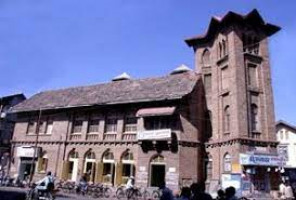
Barton Library And Museum
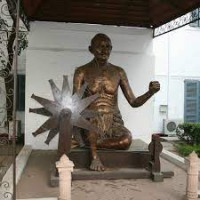
Gandhi Smriti
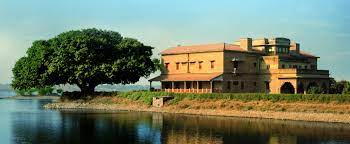
Gaurishankar Lake

Nilambag Palace

Takhteshwar Temple
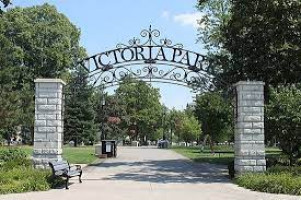
Victoria Park
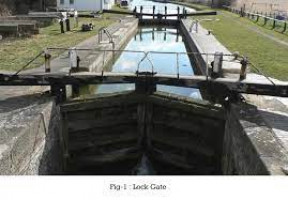
Water Lock Gate
Per Person
28,999
*EXCLUDING APPLICABLE TAXES 4.1 Ratings
( 56 Reviews )
( 56 Reviews )
Per Person
27,999
*EXCLUDING APPLICABLE TAXES 4.1 Ratings
( 56 Reviews )
( 56 Reviews )
Total
67,000
*EXCLUDING APPLICABLE TAXES 4.1 Ratings
( 56 Reviews )
( 56 Reviews )
Total
42,500
*EXCLUDING APPLICABLE TAXES 4.1 Ratings
( 56 Reviews )
( 56 Reviews )
Total
67,000
*EXCLUDING APPLICABLE TAXES 4.1 Ratings
( 56 Reviews )
( 56 Reviews )
Total
68,000
*EXCLUDING APPLICABLE TAXES 4.1 Ratings
( 56 Reviews )
( 56 Reviews )
Per Person
15,500
*EXCLUDING APPLICABLE TAXES 4.1 Ratings
( 56 Reviews )
( 56 Reviews )
Total
68,000
*EXCLUDING APPLICABLE TAXES 4.1 Ratings
( 56 Reviews )
( 56 Reviews )
Per Person
38,990
*EXCLUDING APPLICABLE TAXES 4.1 Ratings
( 56 Reviews )
( 56 Reviews )
Per Person
15,500
*EXCLUDING APPLICABLE TAXES 4.1 Ratings
( 56 Reviews )
( 56 Reviews )
Spent time at the Barton Library and Museum
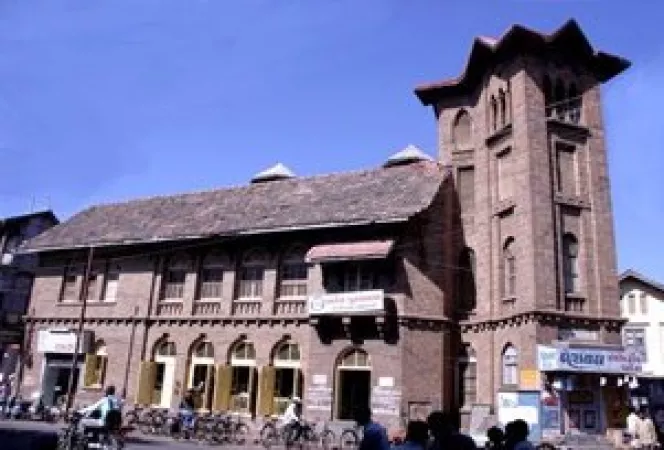 View Gallery - 11
View Gallery - 11 The Barton Library and Museum is a public library located in Bhavnagar, Gujarat, designed by the British architect William Emerson and completed in 1894.
The Barton Library and Museum was inaugurated on December 10th, 1916 by the then Governor of Gujarat, Sir James Willcocks. The library was named after the then Lieutenant Governor of Gujarat, Sir James Barton. The museum was established to house the rich collection of artefacts and art objects donated by the erstwhile Nawab of Bhavnagar, Sir Muhammad Mahabat Khan III. The library building is a blend of Gothic and Renaissance styles, while the museum is an Indo-Saracenic structure. The building has a central dome and four turrets and is decorated with carvings and elaborate stone masonry.
The library is one of the most prominent landmarks in Bhavnagar and is a major tourist attraction.
Places to visit in Bhavnagar
Per Person
28,999
*EXCLUDING APPLICABLE TAXES 4.1 Ratings
( 56 Reviews )
( 56 Reviews )
Per Person
27,999
*EXCLUDING APPLICABLE TAXES 4.1 Ratings
( 56 Reviews )
( 56 Reviews )
Total
67,000
*EXCLUDING APPLICABLE TAXES 4.1 Ratings
( 56 Reviews )
( 56 Reviews )
Total
42,500
*EXCLUDING APPLICABLE TAXES 4.1 Ratings
( 56 Reviews )
( 56 Reviews )
Total
67,000
*EXCLUDING APPLICABLE TAXES 4.1 Ratings
( 56 Reviews )
( 56 Reviews )
Total
68,000
*EXCLUDING APPLICABLE TAXES 4.1 Ratings
( 56 Reviews )
( 56 Reviews )
Per Person
15,500
*EXCLUDING APPLICABLE TAXES 4.1 Ratings
( 56 Reviews )
( 56 Reviews )
Total
68,000
*EXCLUDING APPLICABLE TAXES 4.1 Ratings
( 56 Reviews )
( 56 Reviews )
Per Person
38,990
*EXCLUDING APPLICABLE TAXES 4.1 Ratings
( 56 Reviews )
( 56 Reviews )
Per Person
15,500
*EXCLUDING APPLICABLE TAXES 4.1 Ratings
( 56 Reviews )
( 56 Reviews )
Wander around the Gandhi Smriti
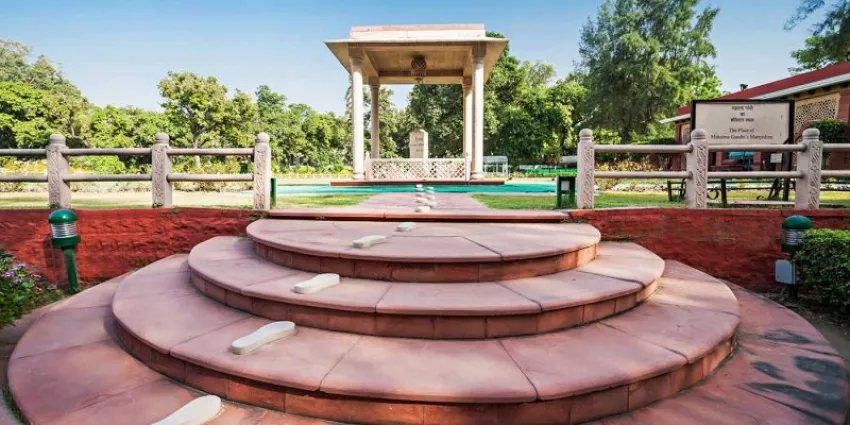 View Gallery - 11
View Gallery - 11 Gandhi Smriti is a museum dedicated to Mahatma Gandhi in Bhavnagar, Gujarat, India. It is located on the premises of the Sabarmati ashram, where Gandhi stayed from 1917 to 1930. The museum was inaugurated on February 14, 1968, the centennial of Gandhi's return to India from South Africa. The memorial is dedicated to being spread over an area of 6 acres.
The memorial was designed by architect Charles Correa. The memorial consists of a memorial hall, a library, and a research centre. The memorial hall is dedicated to Mahatma Gandhi. It contains a statue of Mahatma Gandhi. The library contains a collection of books and manuscripts on Mahatma Gandhi. The research centre conducts research on Mahatma Gandhi. The museum also houses a collection of photographs, letters, articles, and other memorabilia related to Gandhi.
Places to visit in Bhavnagar
Per Person
28,999
*EXCLUDING APPLICABLE TAXES 4.1 Ratings
( 56 Reviews )
( 56 Reviews )
Per Person
27,999
*EXCLUDING APPLICABLE TAXES 4.1 Ratings
( 56 Reviews )
( 56 Reviews )
Total
67,000
*EXCLUDING APPLICABLE TAXES 4.1 Ratings
( 56 Reviews )
( 56 Reviews )
Total
42,500
*EXCLUDING APPLICABLE TAXES 4.1 Ratings
( 56 Reviews )
( 56 Reviews )
Total
67,000
*EXCLUDING APPLICABLE TAXES 4.1 Ratings
( 56 Reviews )
( 56 Reviews )
Total
68,000
*EXCLUDING APPLICABLE TAXES 4.1 Ratings
( 56 Reviews )
( 56 Reviews )
Per Person
15,500
*EXCLUDING APPLICABLE TAXES 4.1 Ratings
( 56 Reviews )
( 56 Reviews )
Total
68,000
*EXCLUDING APPLICABLE TAXES 4.1 Ratings
( 56 Reviews )
( 56 Reviews )
Per Person
38,990
*EXCLUDING APPLICABLE TAXES 4.1 Ratings
( 56 Reviews )
( 56 Reviews )
Per Person
15,500
*EXCLUDING APPLICABLE TAXES 4.1 Ratings
( 56 Reviews )
( 56 Reviews )
Stroll at the Victoria Nature Park
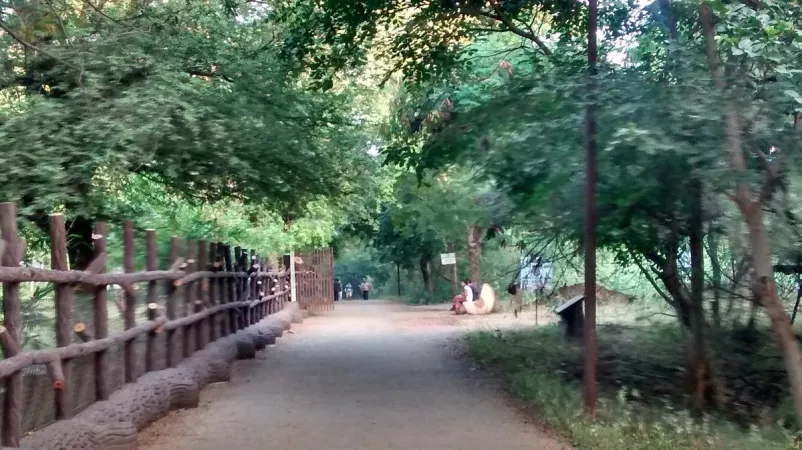 View Gallery - 11
View Gallery - 11 Victoria Nature Park is a popular tourist spot in Bhavnagar. It is located at a distance of about 5 km from the city centre. The park is spread over an area of about 15 acres and is a well-maintained park with beautiful gardens and a variety of trees. The park is a popular spot for bird watching and is also home to a number of animals, including deer, monkeys, and snakes. The Victoria Nature Park was established in the year 1885 by the British.
The park is well known for its lush green gardens, beautiful ponds, and tranquil atmosphere. The park is a popular tourist attraction and is visited by hundreds of tourists every day.
Places to visit in Bhavnagar
Per Person
28,999
*EXCLUDING APPLICABLE TAXES 4.1 Ratings
( 56 Reviews )
( 56 Reviews )
Per Person
27,999
*EXCLUDING APPLICABLE TAXES 4.1 Ratings
( 56 Reviews )
( 56 Reviews )
Total
67,000
*EXCLUDING APPLICABLE TAXES 4.1 Ratings
( 56 Reviews )
( 56 Reviews )
Total
42,500
*EXCLUDING APPLICABLE TAXES 4.1 Ratings
( 56 Reviews )
( 56 Reviews )
Total
67,000
*EXCLUDING APPLICABLE TAXES 4.1 Ratings
( 56 Reviews )
( 56 Reviews )
Total
68,000
*EXCLUDING APPLICABLE TAXES 4.1 Ratings
( 56 Reviews )
( 56 Reviews )
Per Person
15,500
*EXCLUDING APPLICABLE TAXES 4.1 Ratings
( 56 Reviews )
( 56 Reviews )
Total
68,000
*EXCLUDING APPLICABLE TAXES 4.1 Ratings
( 56 Reviews )
( 56 Reviews )
Per Person
38,990
*EXCLUDING APPLICABLE TAXES 4.1 Ratings
( 56 Reviews )
( 56 Reviews )
Per Person
15,500
*EXCLUDING APPLICABLE TAXES 4.1 Ratings
( 56 Reviews )
( 56 Reviews )
Spend a quiet evening at Gaurishankar Lake
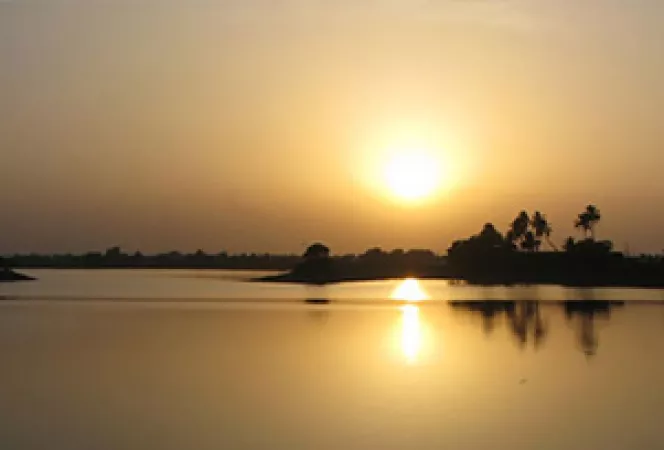 View Gallery - 11
View Gallery - 11 Surrounded by beautiful hills, the Gaurishankar Lake is a popular tourist attraction in Bhavnagar, located on the outskirts of the city and offers a beautiful view of the surroundings. The lake is also a popular spot for bird watching. It is one of the biggest and most popular lakes in the area. The lake is also a popular spot for fishing.
Furthermore, the lake is located in the Gaurishankar Wildlife Sanctuary, about 45 km from the district headquarters of Bhavnagar. The lake was formed about 4,000 years ago as a result of a major earthquake. The earthquake caused a huge crack in the earth's surface, and the water from the Arabian Sea surged in and filled up the depression. The lake has a circumference of about 16 km and a maximum depth of about 30 m. The Gaurishankar Wildlife Sanctuary was set up in 1986 to protect the lake and its environs. The sanctuary is home to a wide variety of flora and fauna, including the endangered Indian leopard.
The lake is a popular tourist destination and is visited by thousands of tourists every year.
Places to visit in Bhavnagar
Per Person
28,999
*EXCLUDING APPLICABLE TAXES 4.1 Ratings
( 56 Reviews )
( 56 Reviews )
Per Person
27,999
*EXCLUDING APPLICABLE TAXES 4.1 Ratings
( 56 Reviews )
( 56 Reviews )
Total
67,000
*EXCLUDING APPLICABLE TAXES 4.1 Ratings
( 56 Reviews )
( 56 Reviews )
Total
42,500
*EXCLUDING APPLICABLE TAXES 4.1 Ratings
( 56 Reviews )
( 56 Reviews )
Total
67,000
*EXCLUDING APPLICABLE TAXES 4.1 Ratings
( 56 Reviews )
( 56 Reviews )
Total
68,000
*EXCLUDING APPLICABLE TAXES 4.1 Ratings
( 56 Reviews )
( 56 Reviews )
Per Person
15,500
*EXCLUDING APPLICABLE TAXES 4.1 Ratings
( 56 Reviews )
( 56 Reviews )
Total
68,000
*EXCLUDING APPLICABLE TAXES 4.1 Ratings
( 56 Reviews )
( 56 Reviews )
Per Person
38,990
*EXCLUDING APPLICABLE TAXES 4.1 Ratings
( 56 Reviews )
( 56 Reviews )
Per Person
15,500
*EXCLUDING APPLICABLE TAXES 4.1 Ratings
( 56 Reviews )
( 56 Reviews )
Pay your homage at the Takteshwar Temple
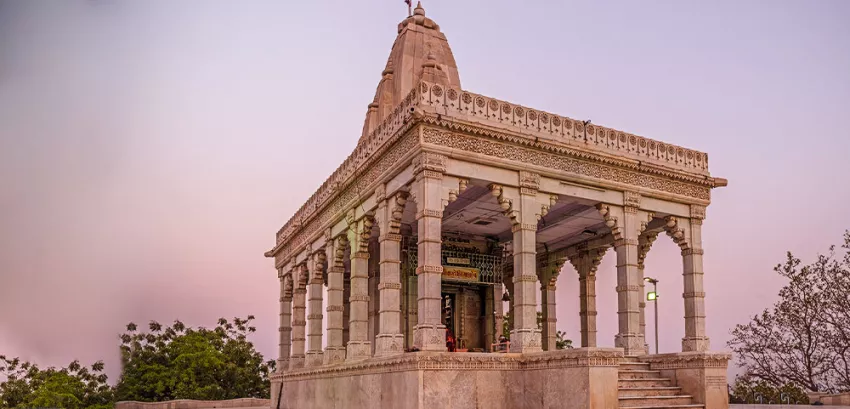 View Gallery - 11
View Gallery - 11 Takteshwar Temple is situated in the Bhavnagar district of Gujarat and is dedicated to Lord Shiva. The temple is also popularly known as Takteshwar Mahadev and it is believed that the temple is more than 1000 years old. The temple is surrounded by beautiful gardens and houses a number of other temples, including the temples of Lord Ganesha, Lord Hanuman, and Navagrahas. The temple has a square sanctum sanctorum with a pyramidal shikhara. The temple is built in the Nagara style of architecture and is decorated with carvings of gods and goddesses.
The temple is an ancient one and is said to have been built by the Pandavas, the heroes of the Hindu epic Mahabharata. The temple is said to have been built at the spot where the Pandavas performed a yajna, a Hindu religious ceremony. The temple is also said to have been visited by the sage Vyasa, who is said to have written the Mahabharata.
Places to visit in Bhavnagar
Per Person
28,999
*EXCLUDING APPLICABLE TAXES 4.1 Ratings
( 56 Reviews )
( 56 Reviews )
Per Person
27,999
*EXCLUDING APPLICABLE TAXES 4.1 Ratings
( 56 Reviews )
( 56 Reviews )
Total
67,000
*EXCLUDING APPLICABLE TAXES 4.1 Ratings
( 56 Reviews )
( 56 Reviews )
Total
42,500
*EXCLUDING APPLICABLE TAXES 4.1 Ratings
( 56 Reviews )
( 56 Reviews )
Total
67,000
*EXCLUDING APPLICABLE TAXES 4.1 Ratings
( 56 Reviews )
( 56 Reviews )
Total
68,000
*EXCLUDING APPLICABLE TAXES 4.1 Ratings
( 56 Reviews )
( 56 Reviews )
Per Person
15,500
*EXCLUDING APPLICABLE TAXES 4.1 Ratings
( 56 Reviews )
( 56 Reviews )
Total
68,000
*EXCLUDING APPLICABLE TAXES 4.1 Ratings
( 56 Reviews )
( 56 Reviews )
Per Person
38,990
*EXCLUDING APPLICABLE TAXES 4.1 Ratings
( 56 Reviews )
( 56 Reviews )
Per Person
15,500
*EXCLUDING APPLICABLE TAXES 4.1 Ratings
( 56 Reviews )
( 56 Reviews )
Devote yourself at the Shri Swaminarayan Mandir
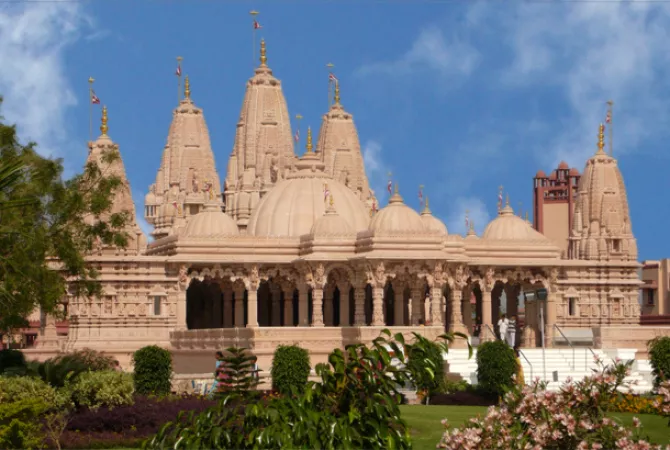 View Gallery - 11
View Gallery - 11 The Shri Swaminarayan Mandir in Bhavnagar, Gujarat, is a Hindu temple dedicated to the god Swaminarayan. The Shri Swaminarayan Mandir in Bhavnagar was consecrated on the auspicious day of Vijayadashmi, in the year 1823, by Shri Swaminarayan Himself. It was inaugurated in 1998 by Pramukh Swami Maharaj and is the largest Swaminarayan temple in the world. The temple is built in the Pancharatha style and covers a large area. The temple has a large hall that can accommodate up to 10,000 people and a marble statue of Swaminarayan. The temple is visited by thousands of devotees every year, who come to offer their prayers and seek blessings from the Lord.
The temple is a three-storied pink sandstone building with a large dome in the centre. The temple has a large hall on the ground floor, which is used for religious ceremonies. The first floor has a small hall and a number of rooms, which are used by the priests. The second floor has a large hall, which is used for religious ceremonies.
Places to visit in Bhavnagar
Per Person
28,999
*EXCLUDING APPLICABLE TAXES 4.1 Ratings
( 56 Reviews )
( 56 Reviews )
Per Person
27,999
*EXCLUDING APPLICABLE TAXES 4.1 Ratings
( 56 Reviews )
( 56 Reviews )
Total
67,000
*EXCLUDING APPLICABLE TAXES 4.1 Ratings
( 56 Reviews )
( 56 Reviews )
Total
42,500
*EXCLUDING APPLICABLE TAXES 4.1 Ratings
( 56 Reviews )
( 56 Reviews )
Total
67,000
*EXCLUDING APPLICABLE TAXES 4.1 Ratings
( 56 Reviews )
( 56 Reviews )
Total
68,000
*EXCLUDING APPLICABLE TAXES 4.1 Ratings
( 56 Reviews )
( 56 Reviews )
Per Person
15,500
*EXCLUDING APPLICABLE TAXES 4.1 Ratings
( 56 Reviews )
( 56 Reviews )
Total
68,000
*EXCLUDING APPLICABLE TAXES 4.1 Ratings
( 56 Reviews )
( 56 Reviews )
Per Person
38,990
*EXCLUDING APPLICABLE TAXES 4.1 Ratings
( 56 Reviews )
( 56 Reviews )
Per Person
15,500
*EXCLUDING APPLICABLE TAXES 4.1 Ratings
( 56 Reviews )
( 56 Reviews )
Feel the serenity at Gopnath Beach
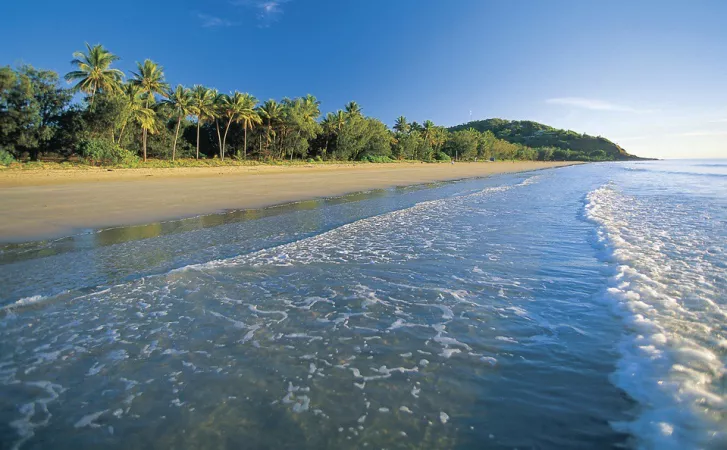 View Gallery - 11
View Gallery - 11 Gopnath beach, located in Bhavnagar, is a beautiful beach with white sands and clear waters. The beach is well-known for its serenity and picturesque surroundings. The clear waters, white sand beaches, and lush greenery make it a perfect place to relax and rejuvenate. There are also a few temples located near the beach that are worth visiting.
It is situated about 16 km from the city of Bhavnagar and is a popular spot for swimming, sunbathing, and fishing. The beach was developed in the early 1990s and was initially known as Gopnath Mahadev Beach. The name was later changed to Gopnath Beach.
The beach is a major tourist attraction in the region. It is frequented by locals and tourists alike.
Places to visit in Bhavnagar
Per Person
28,999
*EXCLUDING APPLICABLE TAXES 4.1 Ratings
( 56 Reviews )
( 56 Reviews )
Per Person
27,999
*EXCLUDING APPLICABLE TAXES 4.1 Ratings
( 56 Reviews )
( 56 Reviews )
Total
67,000
*EXCLUDING APPLICABLE TAXES 4.1 Ratings
( 56 Reviews )
( 56 Reviews )
Total
42,500
*EXCLUDING APPLICABLE TAXES 4.1 Ratings
( 56 Reviews )
( 56 Reviews )
Total
67,000
*EXCLUDING APPLICABLE TAXES 4.1 Ratings
( 56 Reviews )
( 56 Reviews )
Total
68,000
*EXCLUDING APPLICABLE TAXES 4.1 Ratings
( 56 Reviews )
( 56 Reviews )
Per Person
15,500
*EXCLUDING APPLICABLE TAXES 4.1 Ratings
( 56 Reviews )
( 56 Reviews )
Total
68,000
*EXCLUDING APPLICABLE TAXES 4.1 Ratings
( 56 Reviews )
( 56 Reviews )
Per Person
38,990
*EXCLUDING APPLICABLE TAXES 4.1 Ratings
( 56 Reviews )
( 56 Reviews )
Per Person
15,500
*EXCLUDING APPLICABLE TAXES 4.1 Ratings
( 56 Reviews )
( 56 Reviews )
Visit the wildlife at the Bhavnagar Blackbuck National Park
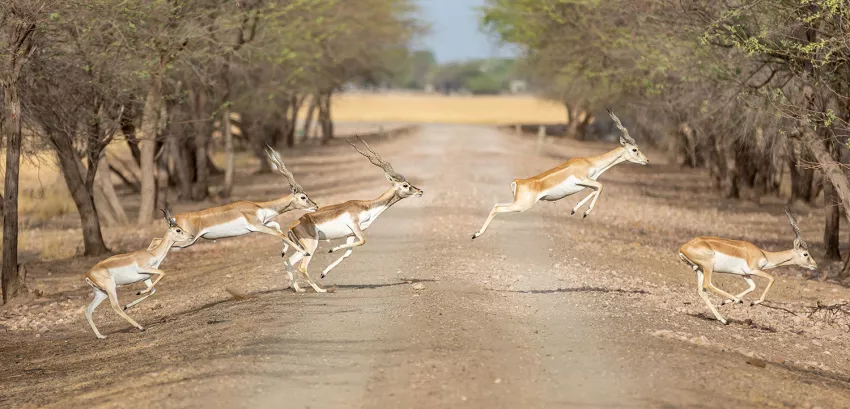 View Gallery - 11
View Gallery - 11 The Bhavnagar Blackbuck National Park is located in the Bhavnagar district of Gujarat and was established in 1974 as a wildlife sanctuary.
It is a small national park that is home to a large population of blackbuck antelope. The park is also home to other species of animals, including chinkara, nilgai, and jackals. The Bhavnagar Blackbuck National Park is one of the major tourist attractions in Bhavnagar. The park is home to a large population of blackbucks and is also a major bird sanctuary and is home to a large number of different species of birds. The park is a major tourist attraction and is visited by a large number of tourists every year.
It was in 1998 that it was declared a national park.
Places to visit in Bhavnagar
Per Person
28,999
*EXCLUDING APPLICABLE TAXES 4.1 Ratings
( 56 Reviews )
( 56 Reviews )
Per Person
27,999
*EXCLUDING APPLICABLE TAXES 4.1 Ratings
( 56 Reviews )
( 56 Reviews )
Total
67,000
*EXCLUDING APPLICABLE TAXES 4.1 Ratings
( 56 Reviews )
( 56 Reviews )
Total
42,500
*EXCLUDING APPLICABLE TAXES 4.1 Ratings
( 56 Reviews )
( 56 Reviews )
Total
67,000
*EXCLUDING APPLICABLE TAXES 4.1 Ratings
( 56 Reviews )
( 56 Reviews )
Total
68,000
*EXCLUDING APPLICABLE TAXES 4.1 Ratings
( 56 Reviews )
( 56 Reviews )
Per Person
15,500
*EXCLUDING APPLICABLE TAXES 4.1 Ratings
( 56 Reviews )
( 56 Reviews )
Total
68,000
*EXCLUDING APPLICABLE TAXES 4.1 Ratings
( 56 Reviews )
( 56 Reviews )
Per Person
38,990
*EXCLUDING APPLICABLE TAXES 4.1 Ratings
( 56 Reviews )
( 56 Reviews )
Per Person
15,500
*EXCLUDING APPLICABLE TAXES 4.1 Ratings
( 56 Reviews )
( 56 Reviews )
Shopping and eating in Bhavnagar
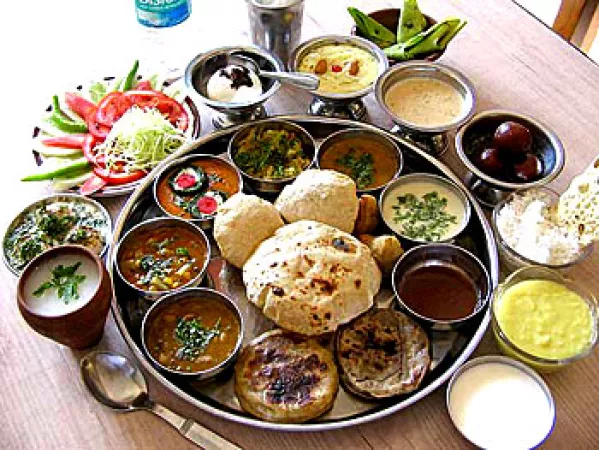 View Gallery - 11
View Gallery - 11 Bhavnagar is a shopper’s paradise, with a range of traditional and modern shops selling everything from clothes to electronics. There are a number of shops in Bhavnagar that sell a variety of goods. Some of the popular shopping destinations in the city include:
1. Swaminarayan Shopping Complex: This is a popular shopping destination for shoppers looking for clothes, jewellery, and other items.
2. Mangaldas Market: This is a popular market for shoppers looking for wholesale goods.
3. Gandhi Chowk: This is a popular market for shoppers looking for local handicrafts.
4. Nehru Shopping Centre: This is a popular shopping destination for shoppers looking for electronic goods.
5. Hathi Bazaar: This is a popular market for shoppers looking for traditional items such as carpets and handicrafts.
There are also a number of excellent restaurants in the city, serving up a variety of local and international cuisine. There are many street foods in Bhavnagar. Some of the most popular street foods in Bhavnagar include pav bhaji, vada pav, samosa, chaat, pani puri, and dosa.
Places to visit in Bhavnagar
Per Person
28,999
*EXCLUDING APPLICABLE TAXES 4.1 Ratings
( 56 Reviews )
( 56 Reviews )
Per Person
27,999
*EXCLUDING APPLICABLE TAXES 4.1 Ratings
( 56 Reviews )
( 56 Reviews )
Total
67,000
*EXCLUDING APPLICABLE TAXES 4.1 Ratings
( 56 Reviews )
( 56 Reviews )
Total
42,500
*EXCLUDING APPLICABLE TAXES 4.1 Ratings
( 56 Reviews )
( 56 Reviews )
Total
67,000
*EXCLUDING APPLICABLE TAXES 4.1 Ratings
( 56 Reviews )
( 56 Reviews )
Total
68,000
*EXCLUDING APPLICABLE TAXES 4.1 Ratings
( 56 Reviews )
( 56 Reviews )
Per Person
15,500
*EXCLUDING APPLICABLE TAXES 4.1 Ratings
( 56 Reviews )
( 56 Reviews )
Total
68,000
*EXCLUDING APPLICABLE TAXES 4.1 Ratings
( 56 Reviews )
( 56 Reviews )
Per Person
38,990
*EXCLUDING APPLICABLE TAXES 4.1 Ratings
( 56 Reviews )
( 56 Reviews )
Per Person
15,500
*EXCLUDING APPLICABLE TAXES 4.1 Ratings
( 56 Reviews )
( 56 Reviews )

Suchismita Das
Suchismita is a PR Professional since 2018. She have worked in PR with a diverse set of clients.
She has completed her Post Graduation in M.Sc. in Media Science from Maulana Abul Kalam Azad University of Technology (MAKAUT). She completed her graduation in English Honours from Kalyani University.
In her free time, she loves sketching and painting, writing creative pieces, crafting DIY objects and binge watching her favourite shows
Explore best popularTour Packages
Tripclap connects you with top travel agents
Compare Custom Quotes and get the best package deal
1
Trusted Network Of 8000+ Agents.
2
Book everything together, including stay & transport.
3
Compare agent profiles & verified reviews.
How It Works
Compare Custom Quotes from Top Travel Agents.

Tell us about your trip

Get Custom quotes from top agents.

Choose the package you like
Latest Destinations : -
• Kargil • Mahabaleshwar • Gaumukh • Da Nang • Chandipur • Mussoorie • Shojha • Kuala Selangor • Anthargange • Harsil • National Chambal Wildlife Sanctuary • Sibu • Ayodhya • Tattapani • Kumbhalgarh • Phi Phi Islands • Alwar • Lai Chau • Kotagiri • Zhengzhou • Kanatal • Lataguri • Halong Bay • Pleiku • Luxor • Neemrana • Macau • Guptakashi • Shivanasamudra Falls • South Sikkim • Chandel • Pahalgam • Utrecht • Rotorua • Dubai • Jawhar • Kota Kinabalu • Dachigam National Park • Dhamtari • Diphu • Crete • Kamshet • Valley of Flowers • Faridabad • Poovar • Bidar • Thanjavur • Kukke Subramanya • Salzburg • Pasighat
• Kargil • Mahabaleshwar • Gaumukh • Da Nang • Chandipur • Mussoorie • Shojha • Kuala Selangor • Anthargange • Harsil • National Chambal Wildlife Sanctuary • Sibu • Ayodhya • Tattapani • Kumbhalgarh • Phi Phi Islands • Alwar • Lai Chau • Kotagiri • Zhengzhou • Kanatal • Lataguri • Halong Bay • Pleiku • Luxor • Neemrana • Macau • Guptakashi • Shivanasamudra Falls • South Sikkim • Chandel • Pahalgam • Utrecht • Rotorua • Dubai • Jawhar • Kota Kinabalu • Dachigam National Park • Dhamtari • Diphu • Crete • Kamshet • Valley of Flowers • Faridabad • Poovar • Bidar • Thanjavur • Kukke Subramanya • Salzburg • Pasighat
Best Selling Domestic Tour Packages : -
Kashmir Tour Packages Andaman Tour Packages Kerala Tour Packages Shimla Tour Packages Manali Tour Packages Sikkim Tour Packages Uttarakhand Tour Packages Rajasthan Tour Packages Chardham Tour Packages Gujarat Tour Packages Rameswaram Tour Packages Gangtok Tour Packages Goa Tour Packages Jaipur Tour Packages Ooty Tour Packages Jim Corbett Tour Packages Mussoorie Tour Packages Kanyakumari Tour Packages Meghalaya Tour Packages Ladakh Tour Packages
Kashmir Tour Packages Andaman Tour Packages Kerala Tour Packages Shimla Tour Packages Manali Tour Packages Sikkim Tour Packages Uttarakhand Tour Packages Rajasthan Tour Packages Chardham Tour Packages Gujarat Tour Packages Rameswaram Tour Packages Gangtok Tour Packages Goa Tour Packages Jaipur Tour Packages Ooty Tour Packages Jim Corbett Tour Packages Mussoorie Tour Packages Kanyakumari Tour Packages Meghalaya Tour Packages Ladakh Tour Packages
Best Selling International Tour Packages : -
Dubai Tour Packages Bali Tour Packages Singapore Tour Packages Thailand Tour Packages Maldives Tour Packages Bhutan Tour Packages Vietnam Tour Packages Mauritius Tour Packages Nepal Tour Packages Europe Tour Packages Sri lanka Tour Packages Turkey Tour Packages Malaysia Tour Packages Azerbaijan Tour Packages
Dubai Tour Packages Bali Tour Packages Singapore Tour Packages Thailand Tour Packages Maldives Tour Packages Bhutan Tour Packages Vietnam Tour Packages Mauritius Tour Packages Nepal Tour Packages Europe Tour Packages Sri lanka Tour Packages Turkey Tour Packages Malaysia Tour Packages Azerbaijan Tour Packages
Certified
We accept (more)
Members of
Media Recognition
Trusted Partners
Award
Copyrights © TripClap. All Rights Reserved



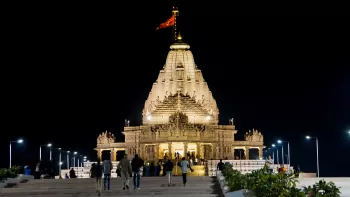


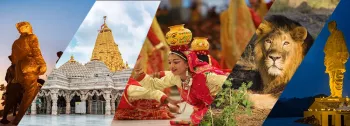
 May
May June
June July
July August
August September
September October
October November
November December
December January
January February
February March
March April
April
